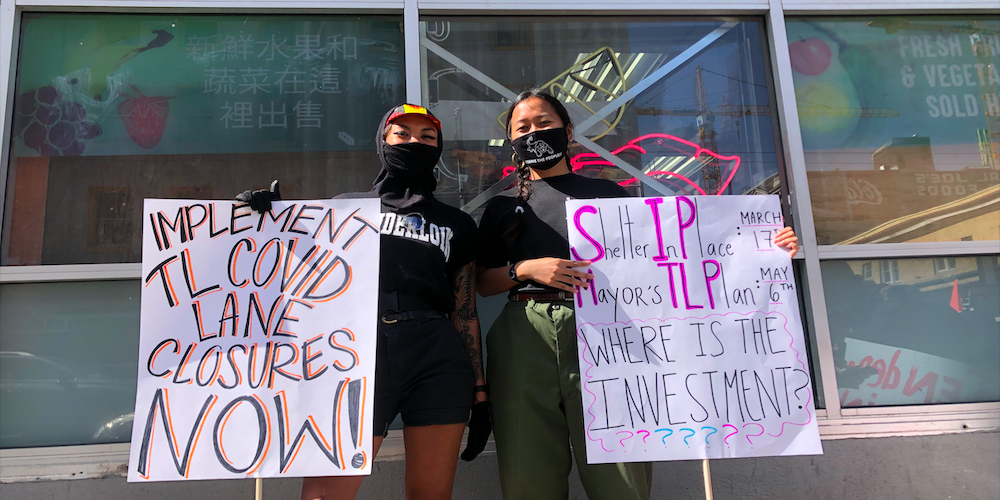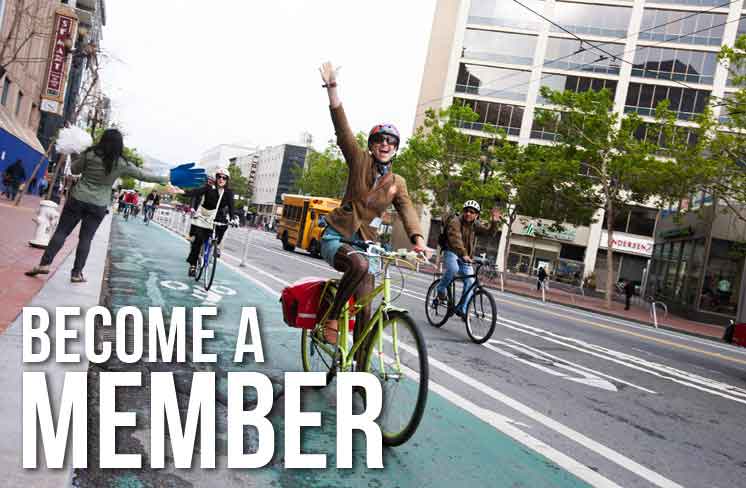The Tenderloin: One of our city’s smallest and densest neighborhoods is also one of the most diverse — home to residents with all different means and from all different backgrounds. It’s also where your San Francisco Bicycle Coalition has invested a lot of time and energy, because we know that every single street here is on the High-Injury Network, which means that people biking and walking here are more at risk of getting seriously injured by drivers than elsewhere.
Though it’s known as a busy part of San Francisco’s downtown, the Tenderloin is at heart a residential neighborhood that’s home to many working class families. A recent survey conducted by the Bay Area Women’s and Children’s Center shows that over 3,500 children live in the neighborhood, with 70 percent of residents identifying as non-white and many whose primary language is not English. The Tenderloin is also one of the poorest neighborhoods in the city, where the average household income is $31,000 — less than half of the city’s average.
Why do all these stats matter and what does this have to do with biking? The Tenderloin is a neighborhood where a majority of households don’t own cars, so it’s these families, their children, and low-income folks who are most impacted by traffic violence. Our Tenderloin residents deserve better. At the same time, we’ve seen the overall number of tickets written by the SF Police Department (SFPD) decline every year for the past six years, yet the number of traffic fatalities per year have remained just about the same. And even though speeding is one of the top causes of traffic fatalities, the SFPD only issued five speeding citations in the Tenderloin in all of 2019. Traditional traffic enforcement is not improving street safety in this neighborhood.
We’ve seen too many examples locally and nationally where traffic stops have led to the murdering of Black and brown people. This is important to keep in mind when advocating for more traffic enforcement in communities of color locally, which is why we kicked off our Tenderloin Community Alternatives to Police for Traffic Enforcement campaign a few months ago. Our goal is to find ways to create safe streets without relying on police-only approaches and ensure Tenderloin streets are just as comfortable as SF streets in other neighborhoods. Jennifer Siswandi, born and raised in the neighborhood, child of immigrant parents, and avid bike rider says, “My community deserves equitable access to safer streets as much as any other neighborhood in the city.”
After months of research on community alternatives to police globally, we’re currently undergoing a robust outreach and engagement process with key community stakeholders in the Tenderloin. This process is broken up into two parts: a survey as well as focus groups to hear from people in the community on their traffic safety experience and thoughts about community alternatives. When talking about our survey with Jennifer she said, “There is strong camaraderie and support within community ties that is more supportive than policing. I’d be really interested in seeing a community-based alternative because I’ve been in situations where other residents on the street have backed me up. I feel confident that people in the neighborhood look out for each other.”
Our outreach process will conclude at the end of March and from there we’ll work with community stakeholders to create a pilot project. We’ll be presenting findings from our outreach process in the coming months and encourage those interested in this campaign to sign up below to receive those updates. Lastly, for our members who live and work in the Tenderloin we encourage you to take our survey and share your experiences.


